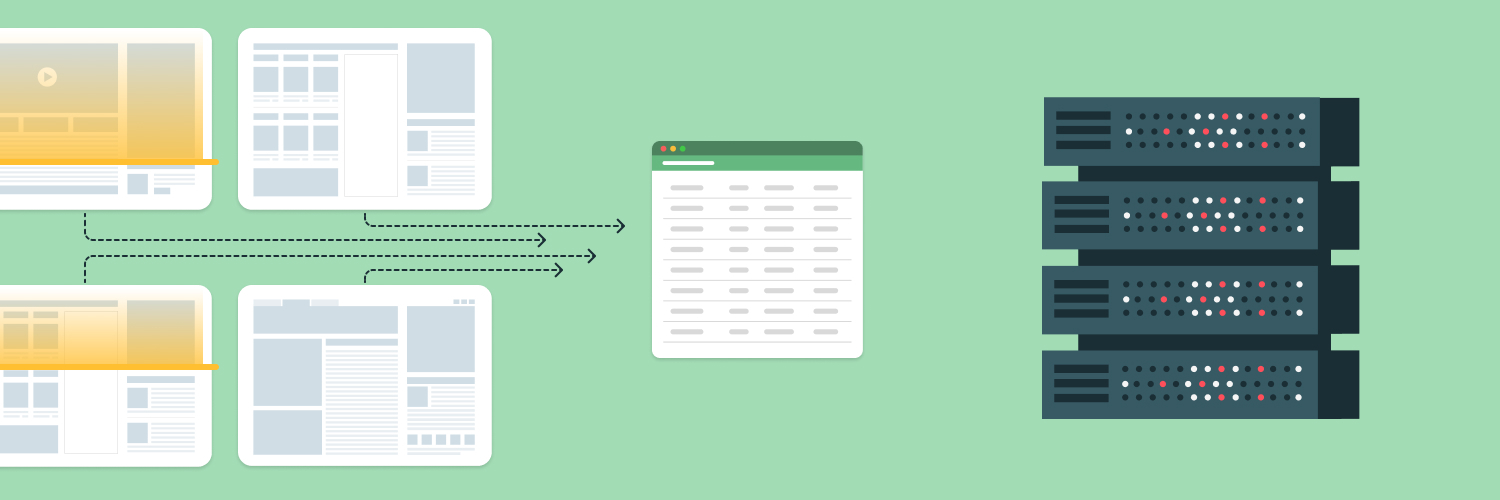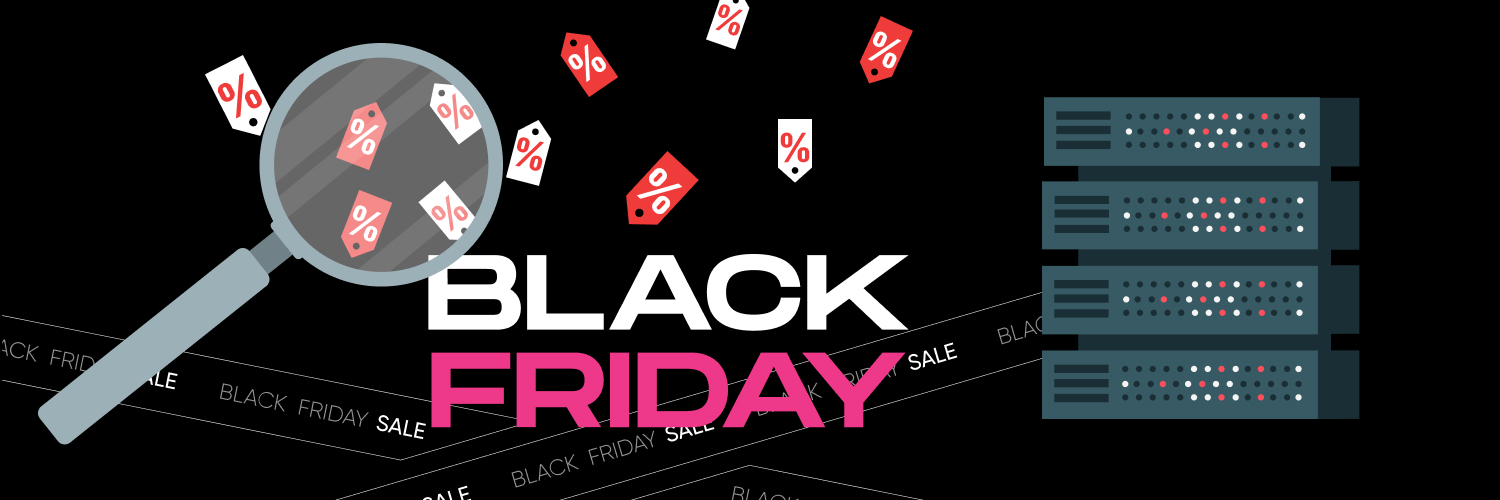How SERP Analysis Bolsters Rankings And Improves Your Business
According to First Page Sage’s report, appearing in the top position on a search engine results page (SERP) can result in a 39.8% organic click-through rate (meanwhile, the second position results in just an 18.7% click-through rate). Getting to that coveted top position starts with an in-depth SERP analysis.
This article will explain the importance of SERP analysis, the benefits and challenges of scraping SERPs, tips for analyzing SERP data, and more. Let’s jump in.
What Are SERPs?

A search engine results page is the page that shows up after you enter a query into a search engine. It typically includes a list of search results, which are links to web pages, images, videos, or other types of relevant content.
Each result on the SERP usually includes a title, a brief description or snippet of the content, and a URL. Search engines use complex algorithms to rank these results based on relevance and other factors like keywords, content quality, and website authority.
SERPs have two primary content types:
Organic results
Organic results are generated via an algorithm without any ad influence. They are non-paid, natural listings that appear, for lack of a better word, organically.
Organic results get their place with the help of search engine optimization (SEO). SEO is a constantly evolving set of techniques that you can use to help your website rank higher on SERPs.
Paid results
Paid results are ads that advertisers have paid for so they can rank high on SERPs. Generally, paid results appear above or below organic listings (it depends on the bidding price).
There are a few different types of paid ads that may show up on the SERP, including the following:
- Native ads: Native ads blend in with the rest of the search engine results and look like organic listings. One of the only differences is that they use sponsored brand logos.
- Sponsored links: Sponsored links look like organic links, but they are clearly marked with a “sponsored” or “ad” label.
- Display ads: These ads typically show up on the right or left-hand side of organic search engine results.
What Else Will You Find on a SERP?

In addition to organic results and paid results, a standard search engine results page includes several other components, including the following:
- Local carousel: The local carousel shows up on the first page of results and features businesses near a particular location. For example, if someone were searching for places to buy fresh flowers in Denver, the local carousel would show local flower shops and other relevant businesses.
- Local knowledge panel: The knowledge panel shows additional information about a specific location, such as a business’s opening hours, photos, and reviews from past customers.
- Local pack results: The local pack displays results alongside the local carousel. These results are displayed as a map featuring three businesses and showing where they’re located.
- Image carousels: Image carousels show images related to a search query. For instance, if someone searched for rain boots, the image carousel would show them the top-ranking images.
- List carousels: A list carousel displays a collection of search results for a specific query that the searcher can scroll through. For example, if someone typed in “best action movies,” they’d get a series of options displayed at the top of the SERP.
- Unedited snippet: An unedited snippet shows some of the text from a website without any formatting or editing.
- Rich snippet: Rich snippets are similar to local packs, but they appear in the standard webpage listing directly below the page title. They include critical information like a business’s average customer rating and average menu price.
- Direct answers: As the name suggests, a direct answer is a specific and concise response to a user’s question. If someone searched, “When are taxes due in 2024?” the particular date would show up at the top of the SERP.
- Enriched search results: Enriched search results often appear as “People also ask” boxes. They deliver additional information related to the initial query.
- Video results: Video results appear on the right side of the other search engine results. They might include how-to videos, tutorials, etc.
Why Does SERP Position Matter?

As we mentioned earlier, your position on a search engine results page significantly influences your click-through rate (the number of people who click on a link).
If you want to increase the number of people who visit your website and potentially invest in your products or services, you need to take your SERP position seriously. The following are some additional reasons why it matters:
Connect with your target audience
Very few people ever click past the first page of search engine results. If they want to find the answer to a question or a solution to a problem, they’re most likely going to stick to the first page (and likely the first few listings on that page).
To connect with your target audience and get in front of them when they need your products or services the most, you should strive to get as close to the top spot as possible.
Increase brand awareness
Appearing near the top of a search engine results page can also help to build brand awareness.
People who need products or services like yours might not have been aware of your business initially. If you show up on their SERP, though, and stand out from the competition, they’ll be more likely to discover you and, potentially, visit your website.
Increase conversions
The better you are at connecting with your target audience and building brand awareness, the more opportunities you have to convert leads into paying customers. If you’re looking to increase conversions, don’t neglect your search engine optimization strategy.
What Is SERP Analysis?

SERP analysis involves reviewing the top-ranking web pages in the SERP to evaluate the relevance of a particular keyword that you want to rank for and gauge how hard it would be to outrank your competitors for that keyword.
You can use SERP analysis for several essential tasks, including these:
Determine keyword relevancy
SERP analysis tells you a lot about specific keywords and their relevance.
Sometimes, a keyword seems highly relevant but actually isn’t, perhaps because the search intent doesn’t match that of the content you want to share. SERP analysis can help you figure out which keywords are worth spending time on and which ones you should ignore.
Assess ranking difficulty
SERP analysis can also help you ascertain how difficult it is to rank at the top of the SERP.
By evaluating metrics like domain authority, the number of external backlinks, and link profile strength, you can get an idea of how your competitors are doing and how likely you are to potentially outrank them.
Find ranking opportunities
SERP analysis can help you figure out new ways to get to the top of the search results. For example, you might find new opportunities like the People Also Ask box or featured snippets for which you can optimize your content and gain a more significant spot on the SERP.
How to Do SERP Analysis
If you want to gain more insight into your website ranking and how you stack up against your competitors, SERP analysis can help. How do you conduct a SERP analysis, though? It starts with the following steps:
Conduct keyword research
Start by conducting keyword research and creating a list of relevant keywords for your niche. You can use a variety of tools, such as Semrush’s keyword tracker, to analyze relevant keywords and get suggestions that might be applicable to your business.
Determine search intent
Once you make a list of keywords, you should analyze their SERPs and consider their relevance. To do this, you need to determine the search intent, which comes in four primary categories:
- Navigational intent: A user is looking for a specific website or a brand
- Informational intent: A user is looking for information about something specific
- Transactional intent: A user wants to buy a product or service
- Commercial intent: A user wants to research a product before buying it
Once you’ve evaluated the search intent, you can consider whether or not it aligns with your content. If it doesn’t, you should shift your focus and try to rank for a different keyword.
Analyze competitors
Your next job is to consider how difficult it would be to outrank the websites that are already ranking highly on a particular SERP. Look at the difficulty of the specific keywords for which it’s ranking (you can use the same tool you used for keyword research) and, if necessary, look for words that will be easier to optimize your content for.
Use data for optimization
After you’ve completed a SERP analysis, you should have plenty of valuable data you can reference when optimizing your content.
You’ll have a better idea of which keywords you should try to rank for, how your competitors are ranking for relevant keywords, what you can do to make your content better than what’s already available online, etc.
Use that information to improve. Be sure to conduct regular analyses, too, so you can evaluate performance and see how your position (and your competitors’ positions) have changed.
What Is SERP Scraping?

SERP scraping is a process of automatically analyzing and extracting data from search engine result pages. It uses specialized software, known as a SERP scraper, to gather information about search results, including organic listings, paid advertisements, and snippets.
A SERP scraper takes essential inputs from a user, such as keywords, keywords to be excluded, result types, etc. Based on these inputs, the SERP scraper will automatically search for the keywords over several search engines and compile all the results in a single place. SERP scraping also gathers metrics like the number of backlinks for each website and its page rank.
Benefits of SERP Scraping
When done correctly, SERP scraping offers numerous benefits to businesses like yours. The following are just some of the advantages it provides:
Competitor analysis
SERP scraping allows businesses to monitor and analyze the search engine rankings of competitors. This information can be used to identify keywords they are targeting, understand their content strategy, and track changes in their rankings over time.
Keyword research
Scraping SERPs can help in identifying relevant keywords for a particular niche or industry. Analyzing the search results can provide insights into user intent and popular queries related to specific topics.
SEO performance monitoring
By regularly scraping SERPs, website owners and SEO professionals can monitor their own search engine rankings. This helps in assessing the effectiveness of their SEO strategies and making adjustments as needed.
Content strategy
SERP scraping can assist in content strategy by identifying the types of content that perform well in search results. This includes understanding the format (e.g., lists, videos, images) and structure of content that resonates with the audience.
Ad campaign optimization
For businesses running paid advertising campaigns, scraping SERPs can provide insights into ad performance, the competition for specific keywords, and the overall landscape of paid search results.
How to Scrape SERPs

Now that you know more about the benefits of SERP analysis and SERP scraping and how they can bolster your business’s rankings, let’s get into the specific steps involved. Here’s a breakdown of what’s required:
Choose a programming language
Knowledge of programming languages will come in very handy when you begin your SERP scraping journey. You don’t have to be a master coder, but understanding the basics of various programming languages helps a lot.
The following are considered the best programming languages for SERP scraping:
Python
Python is a general-purpose language with frameworks that are widely used for building websites and performing web scraping tasks. Python is popular because its simple syntax makes it easy to learn and use — it also has a robust community and is highly versatile.
Here are some additional reasons to consider using Python:
- Performance: Python features multithreading and multiprocessing support, which allows it to process and manipulate large amounts of data, making it a great choice for web and SERP scraping.
- Learning curve: Python is very beginner-friendly and has a gradual learning curve. The extensive documentation that comes with this language also makes it a good choice for less tech-savvy people.
- Web scraping libraries: Python offers a robust selection of web scraping libraries, including Beautiful Soup, lxml, Requests, Scrapy, and Selenium.
JavaScript
JavaScript is another highly versatile and widely used programming language. Like Python, it offers many benefits to those who are new to SERP scraping, including the following:
- Flexibility: JavaScript integrates seamlessly with HTML code, making it easy to use on both the client and server side.
- Performance: JavaScript is known for its superior performance, especially when it comes to web and SERP scraping. It can also handle asynchronous operations, meaning it can process multiple requests at once without sacrificing efficiency or performance.
- Learning curve: JavaScript is relatively easy to learn, and its syntax is fairly easy to understand. It comes with an extensive documentation library and lots of learning resources, too.
Ruby
Ruby touts itself as “a programmer’s best friend” and is a programming language focused on simplicity and ease of use. Here are some of the top reasons why you may choose to use it for SERP scraping:
- Learning curve: Ruby is well-known for being easy to learn and understand, making it a good choice for beginners.
- Community support: Ruby has an enthusiastic community attached to it, so you can quickly get support if you have questions, concerns, etc.
- Web scraping libraries: Ruby offers several web scraping libraries, including Mechanize, Nokogiri, selenium-webdriver, OpenURI, httparty, and Watir.
PHP
PHP is a server-side scripting language that has helped developers manage relational databases and create dynamic websites and content management platforms like WordPress. The following are some of the primary benefits it offers for SERP scraping:
- Adaptability and integration: PHP seamlessly integrates with various databases and web servers, including Apache, MySQL, PostgreSQL, and Nginx. It helps developers build custom web scraping solutions tailored to specific requirements.
- Learning curve: PHP is not as powerful as Ruby, JavaScript, and Python, but many people also note that — because of its narrower focus — it is easier to learn.
- Performance: PHP’s performance is sufficient for most web and SERP scraping projects; however, it’s important to note that it’s not as fast as some of the other programming languages mentioned here.
C++
C++ is an object-oriented programming language known for its flexibility and speed. It does come with a steeper learning curve than the other languages mentioned on this list, but its advantages may outweigh its initial difficulty for those who are more tech-savvy. Some of those advantages include the following:
- Flexibility: Numerous apps and operating systems are written in C++, including macOS X, Windows 10, and Microsoft Office. Its flexibility and speed make it a popular choice for those looking to build customizable SERP scraping solutions.
- Community support: Many people shy away from C++ because of its steep learning curve. However, it also comes with extensive community support and a vast library of free resources, which can help with troubleshooting.
- Web scraping libraries: C++ also provides a variety of web and SERP scraping libraries, which can simplify the processing of retrieving and parsing web data. Some of the most well-known libraries include libcurl, Boost.Asio, htmlcxx, and libtidy.
Install Python and libraries
From here, we’ll explain how to scrape SERPs using Python since it’s generally considered the most straightforward programming language.
The first step is to download and install Python and the essential Python libraries.
You can download and install Python from the python.org website. Then, install the Requests library (we recommend this one because of its simple and intuitive interface, but you can use other libraries like Beautiful Soup if you prefer).
You can install the library using this command:
- $python3 -m pip install requests (for Windows, use “python” instead of “python3”)
Set up a payload and send a POST request
A payload is the data sent in a request or received in a response. It’s the content of a message being transmitted between a client and a server and contains the information necessary to perform a specific operation or retrieve specific data.
A POST request requests that a web server accept the data enclosed in the request message body (typically for storing).
In this example, we’ll build the payload using Google Search as the source:
- payload = {
‘source’: ‘google_search’,
}
Next, you’ll add the query. This is a crucial parameter that determines the search results you’ll be retrieving. In our example, we’ll use “rainboots” as our search query. At this stage, the payload dictionary looks like this:
- payload = {
‘source’: ‘google_search’,
‘query’: rainboots,
}
You can also use a localized domain, such as ‘domain’:fr, to collect results from google.fr. You can use the geo-location parameter ‘geo_location’:France as well. Here’s an example:
- payload = {
‘qource’:’google_search’,
‘query’:’rainboots’,
‘domain’:’fr’,
‘geo_location’: ‘France’,
‘locale’: ‘en-us’
}
By default, your request will deliver the first ten results from the first page. You can customize this, though, by using the parameters start_page, pages, and limit.
The start_page parameter determines the page of search results to return. The pages parameter specifies the number of pages, and the limit parameter determines the number of results on each page.
For example, these parameters would fetch results from pages 11 and 12, with 20 results on each page:
- payload = {
‘start_page’: 11,
‘pages’: 2,
‘limit’: 20,
… # other parameters
}
Here’s an example of what the final script could look like:
import requests
from pprint import pprint
payload = {
‘source’: ‘google_search’,
‘query’: rainboots,
‘domain’: ‘de’,
‘geo_location’: ‘Germany’,
‘locale’: ‘en-us’,
‘parse’: True,
‘start_page’: 1,
‘pages’: 5,
‘limit’: 10,
}
Looking for a Faster Approach? Use a Scraping Tool

If you aren’t comfortable with the coding required to scrape SERPs using Python, you can also use a pre-built SERP scraper. Here are some of the most important factors to consider when choosing a scraping tool:
- Coverage and search engines: Check to see if the tool supports the search engines and regions you’re interested in.
- Request limits and pricing: Understand the tool’s pricing structure, as well as any limits placed on requests. Be wary of options with unclear pricing information (or no pricing details at all).
- Scalability: Choose a tool that can accommodate your needs as your project scales. Some providers offer plans that grow with your usage.
- Documentation and ease of use: Comprehensive documentation and easy-to-follow guides will save you a lot of time and ensure you’re getting the most out of your tool.
- Data delivery format: Make sure the tool provides data in a format that’s convenient for you (JSON, CSV, XML, etc.).
- Response time and performance: Test the tool’s response times — ideally during peak usage — to ensure it meets your requirements.
- Error handling and support: Understand how the tool handles errors and if it provides informative error messages.
- Captcha handling: Some tools offer solutions to handle CAPTCHA challenges, which can help you ensure consistent data retrieval.
- Proxy support: Consider if the tool supports rotating IP addresses or proxy usage, which can help prevent IP blocking and ensure data accuracy (more about proxies in a minute).
- Reviews and reputation: Research the provider’s reputation and reviews from other users to better understand the reliability and quality of their services.
There are plenty of tools that you can use to expedite the SERP analysis process. If you pay attention to the guidelines listed above, though, it’ll be easier to sift through your options and choose the most suitable one.
Challenges of Scraping SERPs (and Solutions)

SERP analysis and scraping offers plenty of benefits, no matter what kind of business you run or the products or services you sell. At the same time, though, it also comes with several challenges that you must overcome to make SERP scraping work for you.
Here are some of the most frequently cited challenges, with solutions:
Challenge: IP blocking
Search engines often block IP addresses associated with excessive crawling or scraping activity. The reason for this is to prevent bots and crawlers from overloading servers and negatively impacting the user experience.
Solution
If you find yourself getting blocked, using a SERP proxy is an excellent solution.
A proxy acts as an intermediary between you and the website or search engine you’re using.
Without a proxy, the website or search engine can identify you based on your IP address. With a proxy, though, you add a protective layer between your device and the website or search engine, which hides your IP address and displays a different one. The website sends its response to the proxy, too, which then sends it back to you.
SERP scraping with proxies allows you to circumvent IP blocking issues and continue collecting the data you need.
Challenge: CAPTCHAs
CAPTCHA stands for Completely Automated Public Turing Test to Tell Computers and Humans Apart. Search engines use captchas and other anti-scraping mechanisms to differentiate between human users and bots. These mechanisms can hinder your scraping attempts.
Solution
Artificial intelligence and machine learning-powered tools can solve CAPTCHAs consistently and allow for more successful web and SERP scraping efforts.
These tools identify the types of challenges CAPTCHAs are implementing and then apply the correct solution to solve them. They guarantee a high success rate and can help you work around CAPTCHAs that might interfere with your SERP scraping process.
Challenge: Rate limiting
Rate limiting is similar to IP blocking. It focuses on identifying single clients and monitoring their usage to avoid exceeding set limits. Identification can be IP-based, but it can also use other techniques (browser fingerprinting, checking user-agent strings or cookies, etc.).
Solution
One of the simplest ways to avoid rate limiting is to control your request frequency and timing to make it more human-like. You can also rotate your IP address.
Proxies combine these and other solutions to help you avoid hitting rate limits and SERP scrape uninterrupted.
Tips for Analyzing Raw SERP Data

You know how to scrape SERPs and collect valuable data. How do you analyze that data to extract meaningful insights, though? Here are some examples of strategies you can use to evaluate raw SERP data:
SERP feature analysis
SERP feature analysis helps you understand the various features of a search engine results page. This understanding, in turn, can help you improve the visibility of your website in search engine results and increase the amount of traffic the site receives.
When you know which features are available on a SERP and how they work, you can optimize your website to take advantage of these features and improve your chances of appearing in them.
For example, say a SERP has a featured snippet. In that case, you can optimize your website to try to be selected for that snippet.
The following are some additional reasons to optimize your content to show up on SERP features:
- Better content optimization: SERP feature analysis can help you optimize content for specific SERP features.
- Increased website traffic: SERP features are often actioned and drive traffic to your website.
- Increased credibility: Being featured in a SERP feature adds credibility to your brand and presents your site as an expert on a given topic.
- Better performance monitoring: If you can track the traffic from SERP features over and identify trends, you can then adjust your SEO strategy accordingly to see better results.
- Build brand awareness: SERP features are positioned high on the result page. Even if the feature isn’t clicked, it will still create an impression and help to get more people interested in your brand.
SERP keyword analysis
Keyword analysis involves identifying and analyzing the specific keywords and search phrases that bring traffic to your website through both organic and paid search.
Keyword analysis helps to increase conversions and find new markets, but can also be very time-consuming. That’s where SERP scraping and analysis come in handy.
SERP scraping offers many benefits when it comes to expediting the keyword analysis process. It helps you gather extensive amounts of data very quickly, saving you from wasting hours manually searching for relevant keywords.
How to conduct SERP keyword analysis
Keyword research and analysis consists of two main components: assessing content and tracking keywords related to a specific industry.
First, you must understand your target queries and their current rankings. We recommend creating a list of keywords and their search rankings that you can easily reference.
Once you have a better understanding of your target queries and how they rank, you can move on to the second step, which involves compiling a list of keywords for which you want to rank. Focus on competitor keywords as well as high-ranking keywords in your industry, which will help you capture more and higher-quality leads.
Remember to track keywords that reference your company and its location, too. If you operate in different areas, use proxies to get more accurate results (you’ll learn more about the best proxy types to use in a moment).
SERP competitive analysis
You can also use data collected from SERP scraping to analyze your competitors.
As the name suggests, competitive analysis involves identifying competitors in your industry and researching their marketing strategies. You can use this information to identify your own company’s strengths and weaknesses relative to each of your competitors.
How to conduct SERP competitive analysis
Start by checking to see if major websites like Wikipedia and Quora have taken over the entire SERP for a particular keyword. If they have, you might want to skip that keyword because it will be challenging to outrank those more prominent sites.
Next, search for a unique angle that your competitors haven’t considered yet. If you do find one, start considering ways to incorporate it into your content.
Last but not least, don’t forget to analyze the best-performing piece in the SERP. Look for ways to improve it and make it more valuable.
Best Proxies for SERP Analysis

Proxies are one of the most powerful tools you can add to your SERP analysis tool kit — especially if you want to avoid some of the most common challenges associated with SERP scraping and analysis. Listed below are some of the best proxies you can utilize:
Datacenter proxies
Datacenter proxies are not affiliated with an Internet Service Provider (ISP). They are hosted on servers in data centers. They are generally faster, but websites may detect them more easily.
The following are some of the greatest advantages datacenter proxies offer:
- Cost-effectiveness: Datacenter proxies are highly affordable and offer unlimited bandwidth without sacrificing security.
- Speed: Because they use high-performance servers, datacenter proxies offer very high speeds.
Residential proxies
Residential proxies use IP addresses assigned to real residential locations.
Residential proxies offer numerous benefits, including these:
- Less likely to be blocked: Because Residential proxies use IP addresses assigned to real residential locations, websites have a harder time detecting them as they look like a real end-user.
ISP proxies
Internet service provider (ISP) proxies are static residential proxies that can be bought or leased from Internet service providers (ISPs). These IPs are hosted by servers located in data centers. However, they are identified by target sites as real users.
Here are some reasons why you might choose to use ISP proxies:
- Legitimacy: ISP proxies offer more legitimacy and a higher level of anonymity because ISPs assign them. Assigned IPs look like legitimate IPs, which allows you to bypass a variety of anti-scraping and security measures.
- Uptime: ISP proxies boast impressive uptime (around 99.99 percent) with superior performance and security features.
- Speed: ISP proxies provide an extensive IP pool and similar speeds to data center IPs, making your SERP scraping efforts more reliable and efficient.
Mobile proxies
Mobile proxies assign devices a mobile IP address. They make it look like the user is connected to the internet with a mobile data network.
These proxies use real phones and SIM cards. When you invest in a mobile proxy, you’re using a genuine IP address from a telecom provider.
Mobile proxies offer several benefits, including the following:
- Carrier-Grade NAT (CGNAT): CGNAT facilitates multiple users on a single IP address.
- Combat IP bans and scraping: Generally, websites and search engines are hesitant to ban mobile IPs due to the potential impact on legitimate mobile users.
- Uninterrupted scraping: Mobile proxies allow for smooth data acquisition by helping you overcome IP ban issues.
Final Thoughts

Search engine results page analysis plays a critical role in helping you enhance your search engine optimization strategy, drive more traffic to your website, and improve your lead generation and conversion efforts.
The right technology, including proxies and SERP scraping tools, will make your analysis process easier and maximize your results. Learn more about scraping solutions today.
The information contained within this article, including information posted by official staff, guest-submitted material, message board postings, or other third-party material is presented solely for the purposes of education and furtherance of the knowledge of the reader. All trademarks used in this publication are hereby acknowledged as the property of their respective owners.




